- 2024/07/08 - Ambre and friends directed an issue of Sciences du Design on the complicated relationship between the notion of design and medium.
- 2024/06/15 - Ambre talks about cemetery architecture in Delpire and Co Librarie, about the wonderful Collectionner Les Tombes edited by Editions Païen
- 2024/01/14 - Ambre edites new glossary terms for D.i.T magazine
- 2022/07/07 - Ambre translates and edits a chapter for the antology Materiality for D.i.T magazine
[NOW] Ambre, John Provencher and JR Etienne talks about online identiti(es), opacity and artistic authenticity @ Maison Européene de la Photographie for New Ways of Seeing
This conversation with John and JR, and me as a moderator, is a part the New Ways of Seeing festival in Paris. We discuss all of our different conscious or accidental strategies toward the exhausting demand to appear and be visible. We talk about reclaiming the possibility of selecting or resisting an all seeing culture, withholding what can be readable and comprehensible, to think beyond transparency and embrace opacity. Thanks to the MEP team, Kim Lê Boutin incredible work and the wonderful audience !!!! Vids (interviews and the talk) online soon xx
Ambre teaches a class on Images and Media Archeology @ Esad Orléans
"Les images de Google Earth héritent, partiellement, des développements des média optiques du XVIIe siècle. Les caméra embarquées dans nos smartphones trouvent des racines dans la formalisation de la photographie - littéralement "écrire avec la lumière" - au XIXe siècle. Loin d'être naïf, ces constats nous permettent de voir comment nos images et leur média sont "le produit historique et le site de certaines pratiques, techniques et institutions". Ce cours d'introduction à l'archéologie des média et aux études visuelles examinera nos conceptions des images. Nous introduirons la méthode mediarchéologique qui a pour objectif d’étudier les ruptures et continuités entre notre culture technique contemporaine et des média passés en abrogeant le "nouveaux" des "nouveaux média", en réévaluant les média obsolètes ou en examinant nos média imaginaires. Ce cours circonscrit entre la modernité et notre époque, nous permettra enquêter sur les rapports entre images, pouvoir, savoir et voir."
KITTLER, Friedrich, Médias optiques. Cours berlinois 1999, trad. par A. Carvalho, T. Eble, E. Vayssière et S. Waelti, Paris, L'Harmattan, coll. « Esthétiques allemandes », 2015
BOIDY, Maxime, Les études visuelles, Vincennes, Presses universitaires de Vincennes, 2017
PARIKKA, Jussi, Qu’est-ce que l’archéologie des médias, UGA, 2018, [2011]
CRARY, Johnathan, Techniques de l'Observateur : Vision et modernité au XIXe siècle (1990), Paris, Editions Dehors, 2016
FOUCAULT, Michel, L’Archéologie du savoir, Paris, Gallimard, 1969
Ambre teaches a class on contemporary methodologies and theories of images - invisuality, operationality, platform vision
"Have you ever taken a selfie and realized that it has been automatically altered to make you “more beautiful” according to facial recognition algorithms? Faced with our image regime designed to ensure that the best image wins and the supposedly worst is relegated to the limbo of endless scrolling, this methodology and theory course questions the imperative of high-performance visual production and the cultural techniques that enable this performance: content moderation, clickbait, etc. Through practical exercises, we will attempt to produce non-functional images or subvert the rules of online image distribution. We will ban our images, make them ugly or useless, spam, generate memes, annotate image databases, and absurdly decontextualize archival photographs. In short, we will reflect on and produce images using different methodological approaches. Each explored will be directly linked to an artistic and theoretical corpus in order to consider what our experiments say about the unique state of vision on platforms."
STEYERL, Hito, In defense of the poor image, e-flux, n°10, 2009, traduit de l'anglais : URL : https://aestheticsofphotography.com/image-pauvre/ consulté le 18/08/2025
CITERELLA, Joshua, How to plant a meme, 2022 URL : https://legacy.donotresearch.net/posts/how-to-plant-a-meme consulté le 18/08/2025
RHIZOME : the DOWNLOAD URL : https://rhizome.org/download/ consulté le 18/08/2025
Eva et Franco Mattes, But I Love Humans, URL : https://0100101110101101.org/but-i-love-human/ consulté le 18/08/2025
Networked Subversive Affirmations URL : https://www.permanentbeta.network/episode/100 consulté le 18/08/2025
Ambre, colleagues and students recreate a camera lucida and investigate its heritage through art-based research
thanks to our wonderful students 💜 we soon are doing to sell our own version of the camera lucida with our new mag release for visual media. stay tuned xx
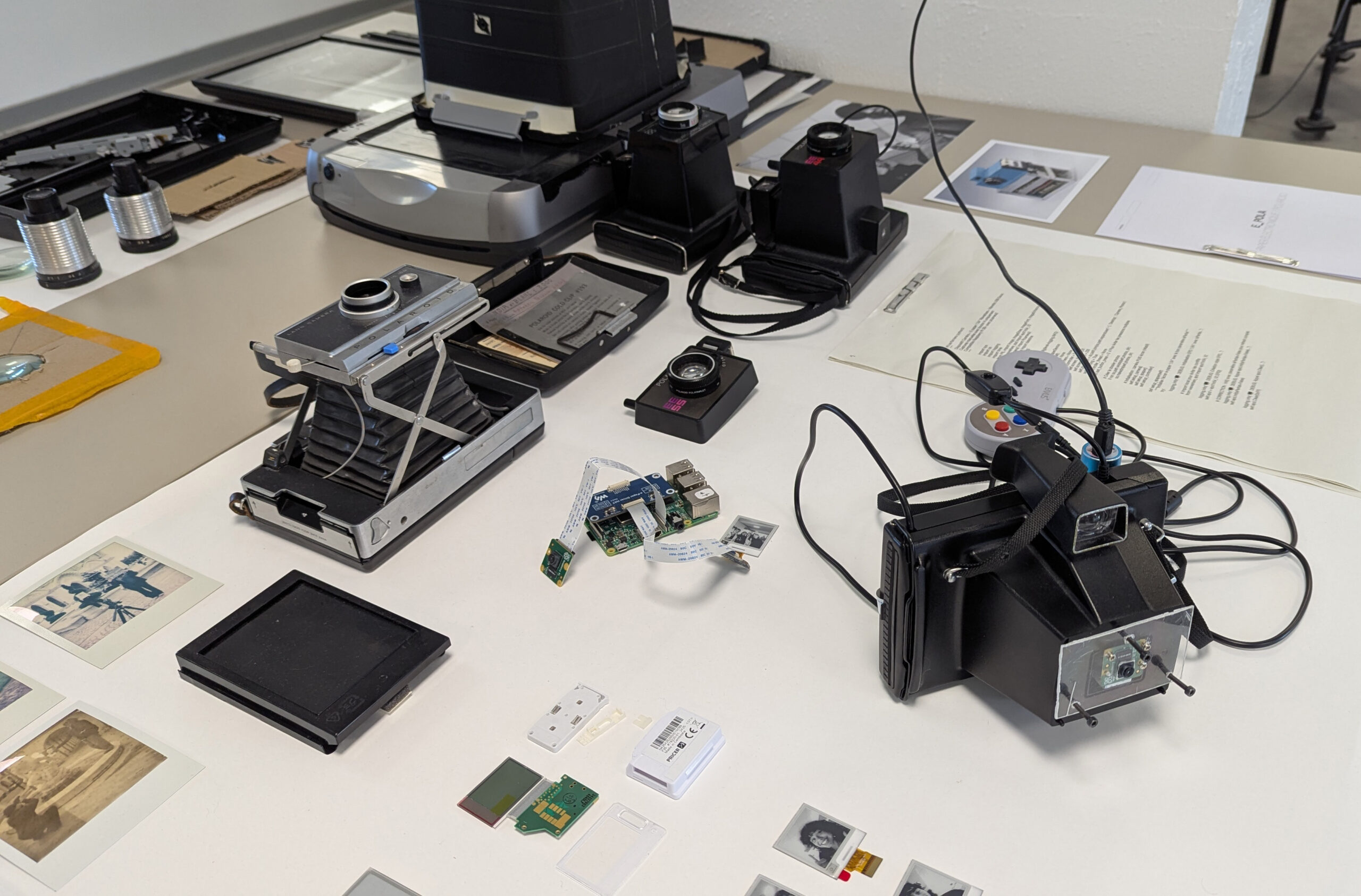
Ambre and Sophie Fétro curate an exhibition of students projects @ Bibliothèque André Chédid
Déranger les Certitudes Matérielles was a restitution of our Master students project research. This exhibition is the result of the workshop lead by designer Mathilde Pellé, examined how our material infrastructure and environment have become a given, to the point of being overlooked even by researchers and designers as formalization of specific modes of being and doing. Nevertheless, there's still possibilities to choose, reject, question and deconstruct this material world in order to offer alternatives. This exhibition aims to develop a critical view of our cultural artifacts and their social normalization through in depth investigation of different sites in the 15th arrondissement in Paris. While some proposed new architectures made only for non-human life, others examined new ways to discover or caring for our technical infrastructures. You can see some of theirs works online here
thanks to the wonderful team of André Chédid team for hosting us and their supports xx
Ambre writes an article on demon, vision and media theory for fun
Ambre exhibits an video essay on hot girls sleeping on camera @ the ESAD Orleans Gallery
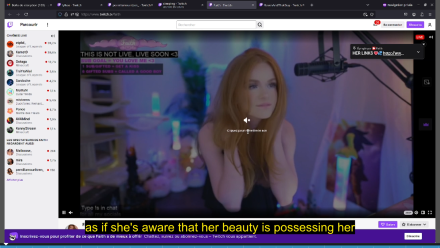

Extract from the video essay.
[NOW] Ambre is a theory supervisor for bachelor students in the Visual Media Department @ESAD Orleans
Ambre, Sophie Fétro and Mathild Pellé are doing a workshop at Université Paris 1 Panthéon-Sorbonne
For more info ⬇️ http://designparis1.com/?p=2738
[NOW] Ambre is a theory supervisor for master students in the Visual Media Department @ESAD Orleans@ESAD Orleans
Ambre teaches a theory class about vision, visuality and counter-visuality @ESAD Orleans
Ambre and friends directed an issue of Sciences du Design on the complicated relationship between the notion of design and medium.
https://shs.cairn.info/revue-sciences-du-design-2024-1?lang=fr
Ambre talks about cemetery architecture in Delpire and Co Librarie, about the wonderful Collectionner Les Tombes edited by Editions Païen
This is a presentation of the Collectionner les Tombes book, both as a collaborative work process and the necessity of this photographic archive of our disappearing funerary art practices.
Ambre is an affiliate teacher @ESAD Orleans in the research program titled "Images and Media Archeology"
Ambre writes an review of Ellie Wyatt's PARALLAX : Conspiracy Theories Details and the Act of Looking Closely
"In her first book, Parallax: Conspiracy Theories, Details, and the Act of Looking Closely, artist-researcher Ellie Wyatt tackles the conceptual crisis between seeing, knowing and believing. This collection of contributions by various authors, essays by Ellie Wyatt and visual works invites us to examine the conditions of production and circulation of contemporary images, insofar as they "serve both truth and untruth " and "fill the gaps between our realities and our fictions." In particular, Ellie Wyatt investigates their role in conspiracies theory whose proliferation online now seems inescapable. From digital architecture and its logic of connection, from detail as a fragmentary mode of knowledge to optics as a magical process, Parallax draws up an aesthetic cartography of this interpretive model of the world. The evocative title of Parallax will no doubt remind photography enthusiasts of the millimetric abyss between the position of a perceived object and the one seen through the lens: the moment when technical mediation becomes visible."
Ambre teaches a methodology course on writing an art dissertation and creative writing @ ESAD Orléans
Ambre participates to the HEAD Genève Option Construction jury
Ambre edites new glossary terms for D.i.T magazine
All of entries were written by ENS LYON students in the art departement, and supervised by Occitane Lacurie
Ambre and Kim Sacks write an essay on images authenticity, theory conspiracies as a aesthetic object and artists as conspiracy theorist
available here 🔗le bruit des images🔗 thanks to the wonderful artist Ellie Wyatt for discussing her works with us xx
Ambre and Kim Sacks interview Matthew Fuller to discuss how filter are intertwine in our everyday aesthetic experiences
available here 🔗On filtering society🔗 many thanks to Matthew Fuller for discussing his perspective of the filter effect xx
Ambre talks about death rituals, monuments and design for a new cemetery landscape @ le bal
Ambre writes an essay on rethinking monumentality and new death rituals for Païen Editions
There's a translation of the first draft, if you enjoy a read about funerary architecture, symbolism and Antigone : https://substack.com/@infernalvisions
Yes, i have a substack - sorry xx
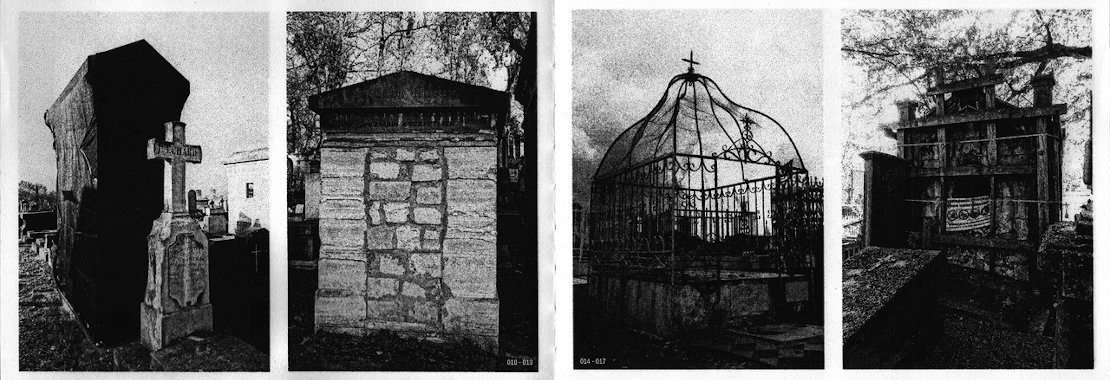 buy the book here : L'homme qui collectionnait les tombes
buy the book here : L'homme qui collectionnait les tombes
Ambre talks about esoteric web culture, conspiracies, contemporary occultism, artistic strategies of revelation and internet infrastructures
For this Cycle de conférence-recherche du Master MAC et Esthétique, we discuss how magical thinking and technical media are inextricable through a media archeology methodology. I explore the resurgence of occult rhetoric and practices in niche online subcultures, from the alt-rigth meme magick to otherwordly deepfake summoning the dead.
Ambre teaches a methodology course on writing art essay and art commentary @ ESAD Orléans
Ambre teaches a class on rituality and design at Université Paris 1 Panthéon-Sorbonne
You can request the syllabus at ambre [dot] charpier [at] univ [figure dash] paris1 [dot] fr
Ambre and Dorian writes an article for Azimuts magazine titled " ça dit quoi"
https://revue-azimuts.fr/numeros/56

[a must read!] Ambre writes an essay on the midjourney/dall-e craze and why GAN images are a snoozefest for Plastik
I wrote this angrily; and i couldn't find an exit nor an end to this essay, sorry xx
📖 Variation continue
https://plastik.univ-paris1.fr/variation-continue-la-manie-autoreferentielle-des-images-contemporaines/
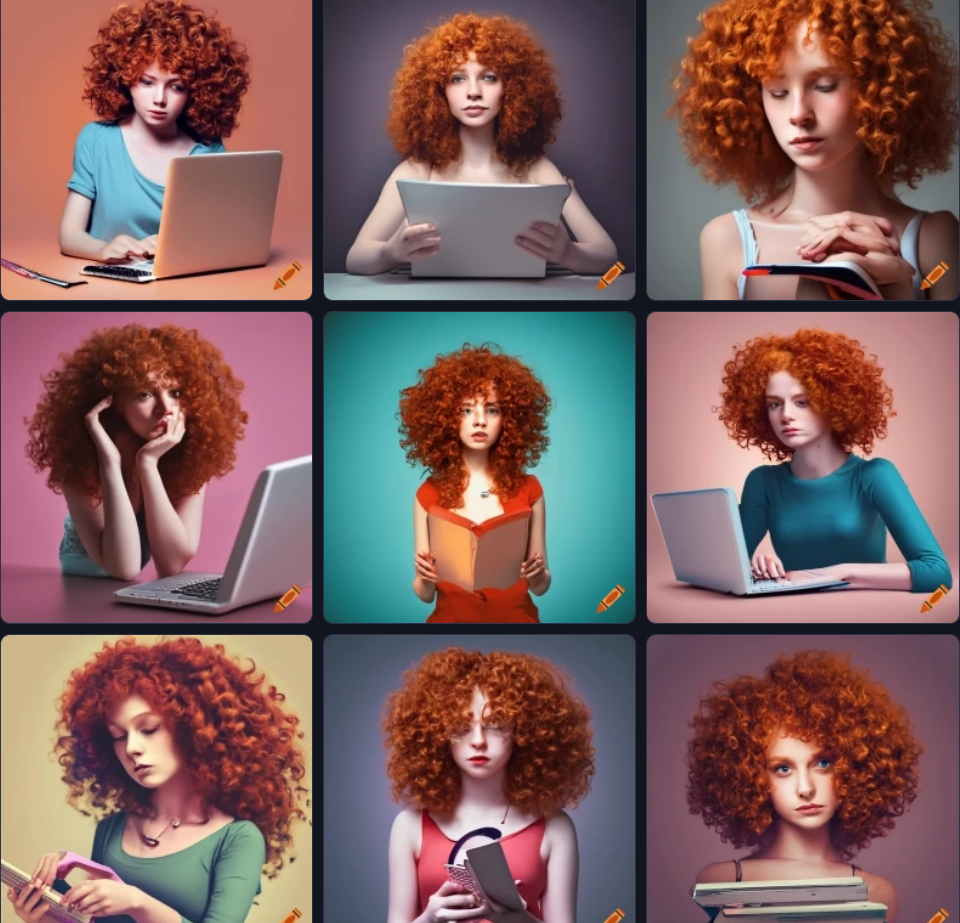
Ambre and Anitra Lourie writes on open secret, artists being spies and unveilling digital infrastructures
Extract : "Recently, this Glasnost logic has hit American political parties hard; as the battle over the possession of classified documents rages on between Republicans and Democrats - Trump's Mar-a-lago scandal and Biden's Think-tank scandal - we find that the content of the documents fanning the fratricidal war are hardly discussed (a dark tale of Middle Eastern espionage?), only whether or not these documents are partially or fully declassified, whether or not they pose a threat to the nation's security. In the end, it's all about the visibility of the invisible, the performativity of secrecy and its exposure in redacted documents that bear the marks of these rituals of veiling/unveiling: crossed-out words, long black lines that partially conceal paragraphs of text that are, in the final analysis, not very evocative. The revelations of investigative journalism, which expose the corruption of power hierarchies ranging from favoritism to insider trading, continue to pile up in the endless piles of documents yet to be examined by overburdened citizens trying to make sense of the inner workings of state and private authorities. These secrets - in the explicit form of redacted documents, partially masked screenshots and other iconic representations - that circulate in all spheres of the web clearly demonstrate that the era of free information exchange and hypervisibility has engendered that strange aesthetic phenomenon that critic Pamela Lee calls "Open secret" and defines as a "visible invisibility .... that functions less to reveal than to declare the prerogatives of those who conceal." In this case, the sensation of revealing hidden content is in fact merely a disclosure of obstructive intentions that are, in a collective public consciousness, already known." A paraitre !
Ambre teaches a class on Hippie Modernism, renouncing design pratices and D.I.Y culture at Université Paris 1 Panthéon-Sorbonne
This course proposes to renounce design as a whole (only as an experiment, this is at the end of the day, a design course...) by analyzing critically marginal movement of making and theory, with a focus on the failed (or realized ???) hippie modernist propositions at the crossroads of ultra-liberal modernity and the pursuit of natural pleasures. We look at how the failure the supposedly liberating utopias of communication and globalization happened and the consequence of embracing the Bateson Cybernetics Model for design practices.
Ambre teaches a class on media archeology @ Université Paris 1 Panthéon-Sorbonne
This course is divided in 3 part : the politic of machine eroticism and woman's bodies at work, the ontology of occult mediation and body as medium, and finally, rationalization through media and deviant bodies. Enjoy xx
Syllabus ⬇️ 🔗Les machines imaginaires : méthodes et esthétiques de l’archéologie des média 🔗
Ambre teaches a class on speculative and critical design @ Université Paris 1 Panthéon-Sorbonne
Syllabus online 🔜
Ambre translates and edits a chapter for the antology Materiality for D.i.T magazine
French translation of BROWN, Bill, Materiality, in HANSEN, Mark et MITCHELL, William John Thomas (éds), "Critical Terms For Media Studies", Chicago, University of Chicago Press, coll. « critical terms », 2010, p. 49-62.
Ambre writes a text of why people should stop saying "immateriality" when talking about media
"Il est difficile d’ailleurs, pour descendre d’une strate supplémentaire, de saisir où commence et quelle est la matérialité des signes et représentations qui structurent nos images, sons, vidéos et textes. Est-ce la lettre, sa forme, son référent ou sa traduction par une multitude d’interfaces interopérantes, du BIOS18, des composants électroniques individuels, de l'électricité qui y circulent, des minerais et plastiques vers lesquels nous devrions nous tourner, afin de saisir ce qu’est le médium ?"
Ambre talks about fetichism, objects sensuality and spiritual materiality @ la HEAD Geneva
This invitation of the Construction Department, under the direction of Katharina Hohmann, was a desire to open a conversation with students on reversibility of the subject / object proposal, by rejecting the mechanistic approach for a vitalistic one. We discussed spiritualist practices and fetishist desires, seeing the object as a state-of-being or a transcendent materiality that can be sacred, divine or desiring.
Ambre writes an critical review of Hito Steyerl's book "De l’art en duty free : L’art à l’époque de la guerre civile planétaire" for Design, Art et Médias
"Cette prédation de l'histoire et cette guerre civile planétaire guident Hito Steyerl dans l'ouvrage où elle dresse plus généralement un constat sombre, pour ne pas dire franchement dystopique, des technologies contemporaines. Elle y dépeint dans l'essai Proxypolitique : signal et bruit, des médias communicants abêtissant des foules délirantes, elles-mêmes lentement remplacées sur le web3, blockchained, par des bots à leur image commissionnés à déclencher stratégiquement des conflits armés du bout d'un clic par tweets interposés pour des états profonds."
Ambre, Catarina Bassotti and Occitane Lacurie organize a symposium on spectralities and the media archeology of haunted machines
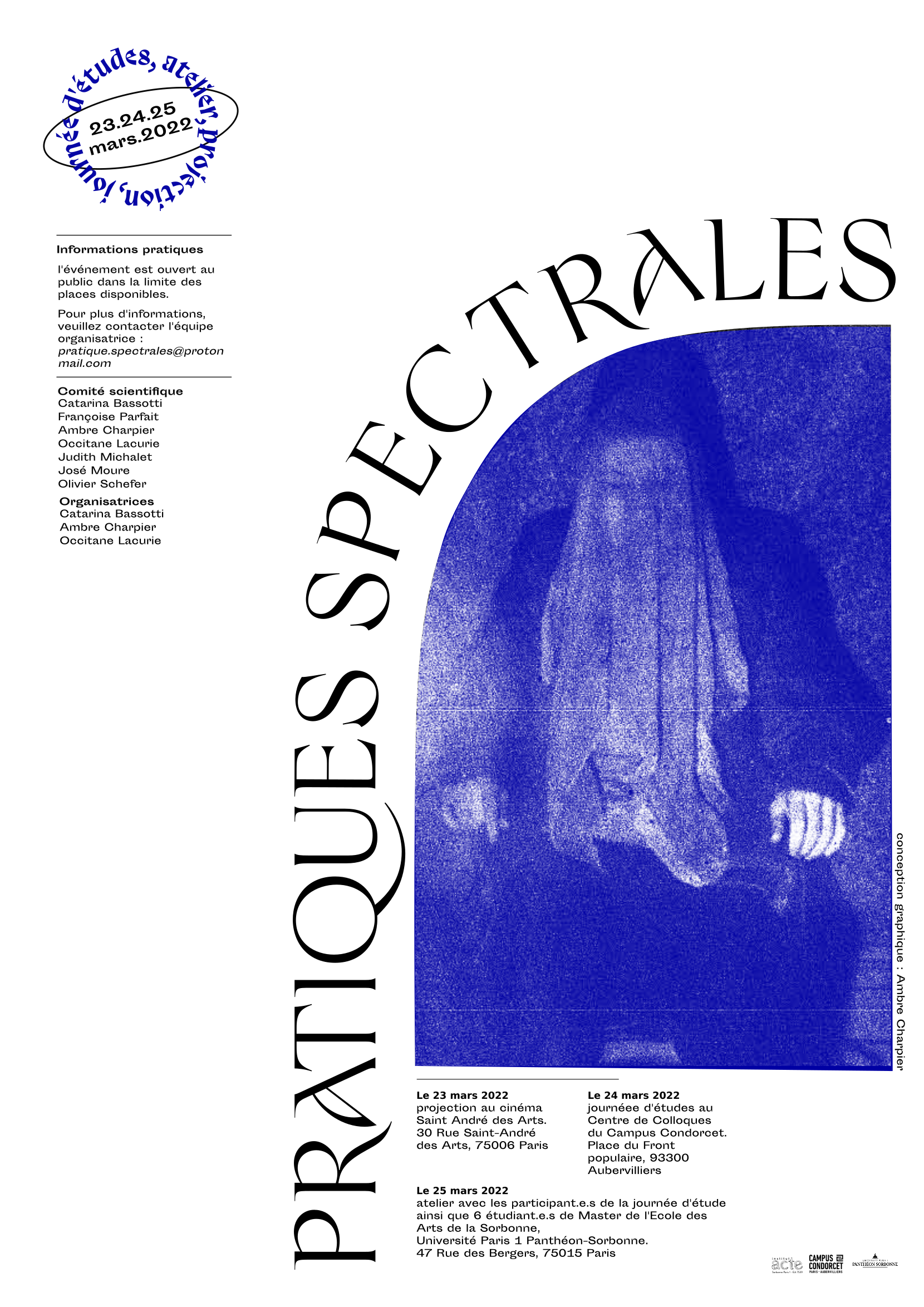 with the collaboration of [Débordements]() and Le Cinéma St André des Arts
with the collaboration of [Débordements]() and Le Cinéma St André des Arts
Ambre writes an essay on the weird desire for technological eternity and Nick Land's Hypersitition for the collective Fanstames en Projet
If you dislike Nick Land (even its old work with the CCRU) do not read this. If you like technological immortality as an idea, read this xx
Ambre teaches a class on amateur practices and design formalism with Dorian Reunkrilerk @ Université Paris 1 Panthéon-Sorbonne
Syllabus ⬇️ 🔗 pratiques_informelles 🔗
Ambre teaches a class on design projects at Université Paris 1 Panthéon-Sorbonne
Syllabus online 🔜
Ambre talks about contemporary ghost and haunted media @ Représenter le Corps Absent
We discuss about the nature of Sadako and the little baby Freeling who got got by the TV bodies (spoiler: this their media qualities and technicities)

Ambre talks about horror philosophy, media as occult medium and the strangeness of mediated culture
An classical media archeology and spectral studies talk about the weirdness and aliveness of media and permeating idea of an ontological possibility of capturing the other word through them. 🔗cycle DAM🔗
Ambre talks on RTS about death, technology and haunted media
Ambre teaches a class on design projects at Université Paris 1 Panthéon-Sorbonne
Syllabus online 🔜
Ambre teaches a class on reparation and waste @ Université Paris 1 Panthéon-Sorbonne
Should we stop making anew, and start repairing the world ? This class, which requires student to bring an broken object as starting point for their project, is an experiment on the potentiality of the defunct, the non-functional and the beauty of the scar. Syllabus online 🔜
Ambre teaches a class on the concept of program and programming titled "Programmable" at Université Paris 1 Panthéon-Sorbonne
"Based on an analysis of texts produced in different disciplines - design, philosophy, sociology - we will question the notion of program. We will explore the material reality of programs, the impact of programmatic logic and the repercussions of this logic on the common imagination, through a presentation of discourses, films and artifacts. From program operators in military complexes, to programs that decide the future of the workforce and those that mimic the dead, students will participate in case studies that trace the social, cultural and political role of programs and communicating devices, in order to establish a project that problematizes the issues raised during the course."
Sadly, no syllabus for this course.
Ambre organises a symposium on new subjectivities in the post-cinema age with a lot of people
documentation ⬇️ 🔗Reshaping our Digital Subjectivity 🔗
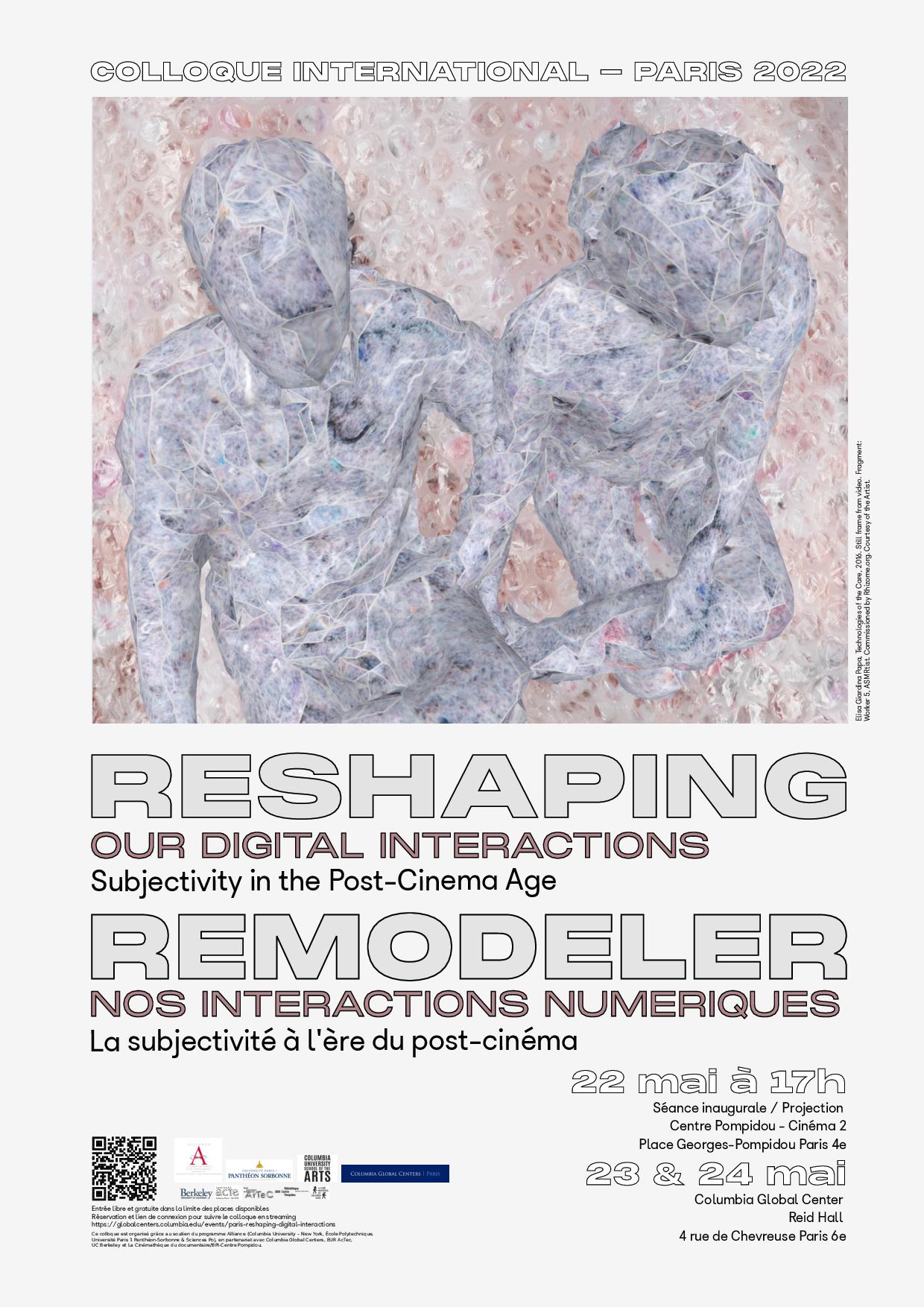
Ambre teaches an introductary class on media theory @ Université Paris 1 Panthéon-Sorbonne
The "In media res" syllabus online 🔜
Ambre teaches a class on design projects at Université Paris 1 Panthéon-Sorbonne
Syllabus online 🔜
About
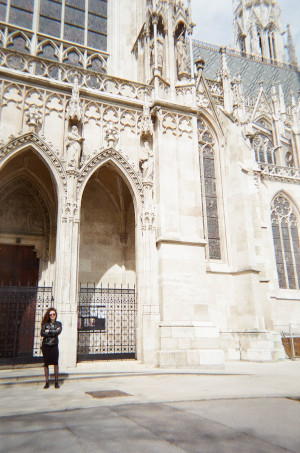
Ambre Charpier is a doctoral candidate at the University of Paris 1 Panthéon-Sorbonne (finishing in 2 months !!!), a visual artist and educator based in Paris suburbs. Her research-led practice encompasses essays, installations, and moving images through which she investigates technology's paradoxical relationship with the occult - the hidden and/or esoteric - , particularly in the context of what it is means to be visible or obscured in our computational culture. Her thesis work examines the intertwined histories of optical instruments, technological media and the occult with a focus on the aesthetic and political dimensions of the hidden, such as conspiratorial thinking and the concept of black boxes.
In addition to her research and artistic projects, Ambre teaches courses on media archaeology with a focus on spectral studies, image theory and visual studies at ESAD Orléans and the University of Paris 1 Panthéon-Sorbonne. She's a jury for international art schools, serves as an editor of the research platforms she co-founded Design in Translation and Design, Arts, Médias and sometimes writes for fun, for money or for research purposes (Païen Edition, Science du Design, Azimuts, and PLATISK)
You can contact her here : ambre(dot.)charpier@esad-orleans(dot.)fr